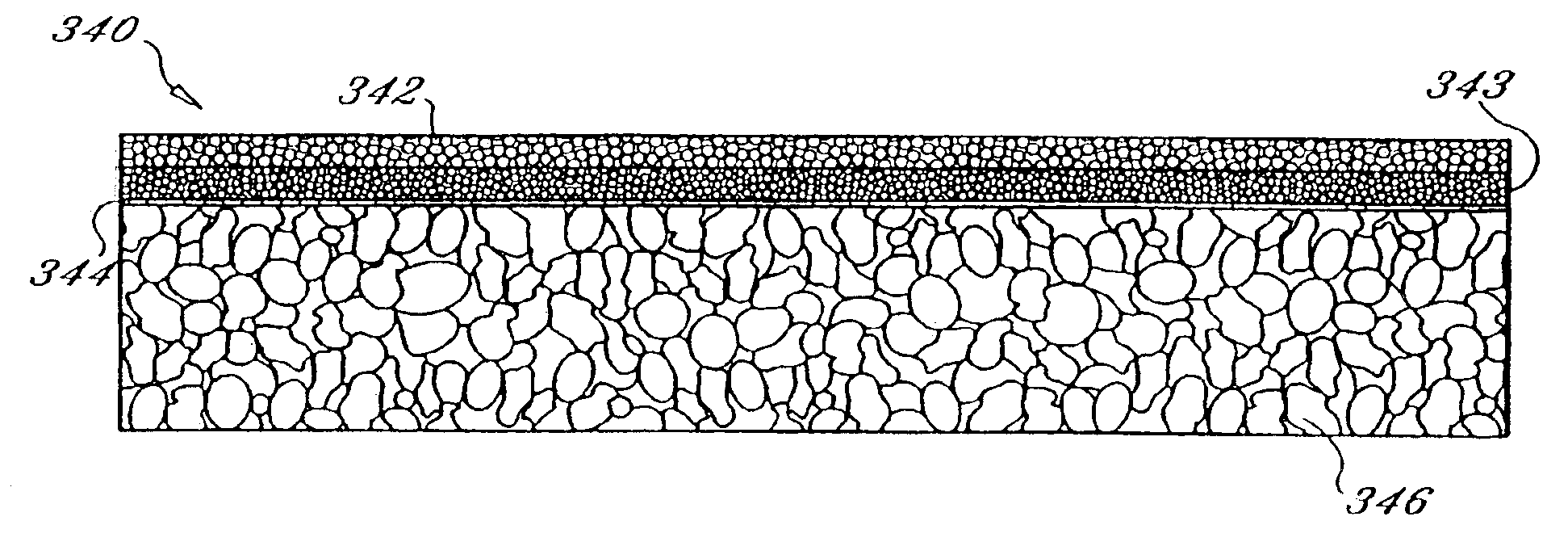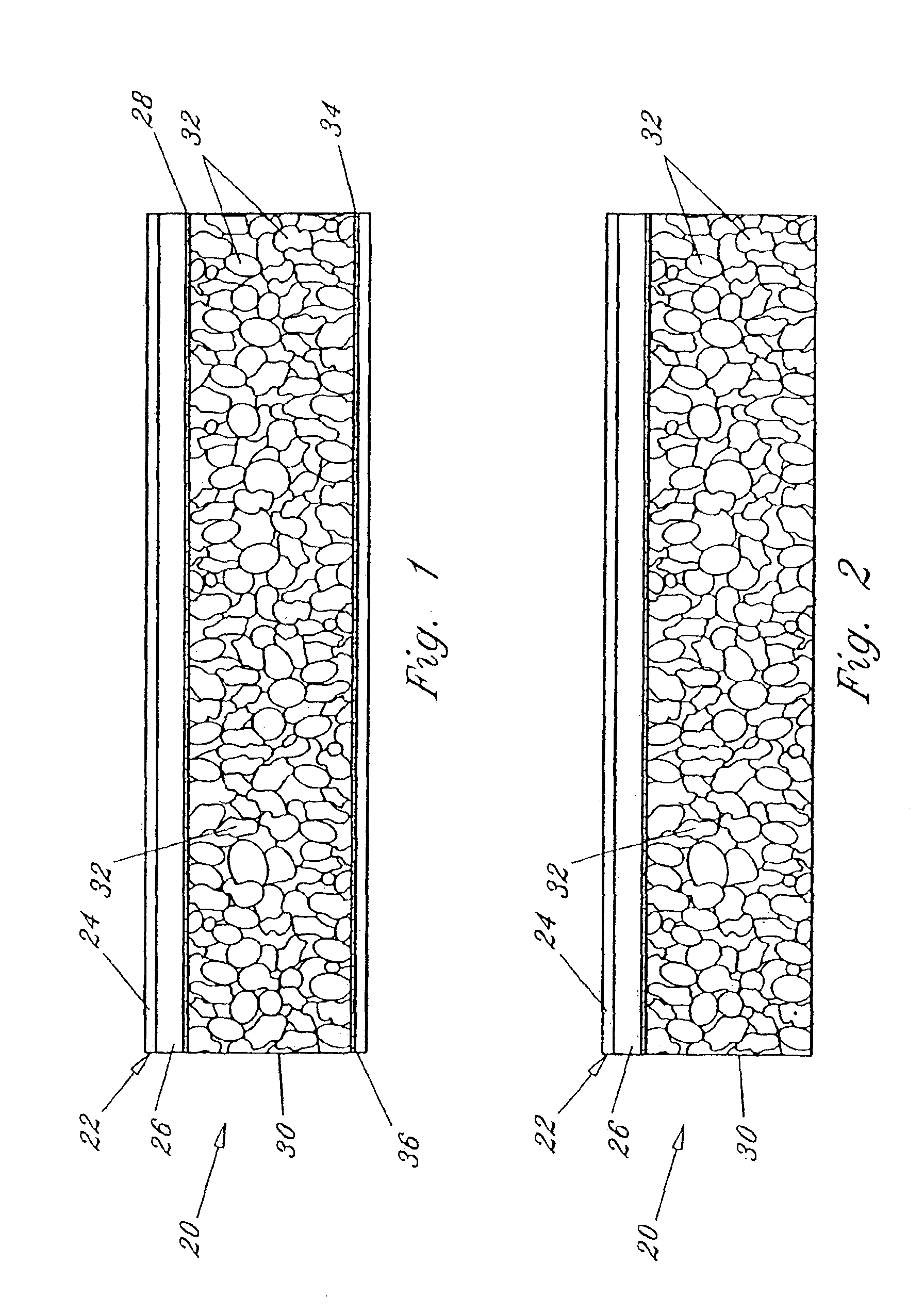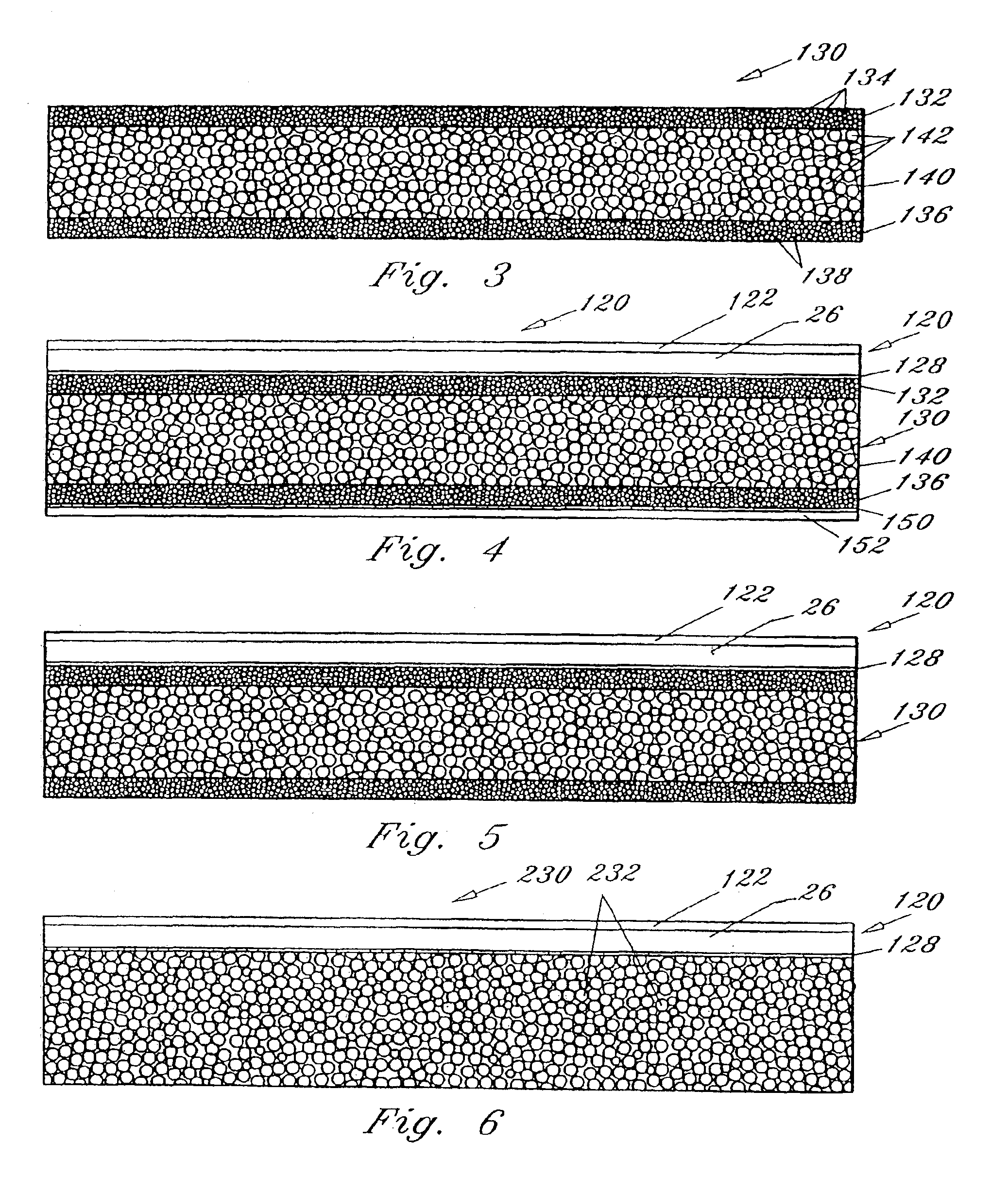Thermoplastic multi-layer composite structure
- Summary
- Abstract
- Description
- Claims
- Application Information
AI Technical Summary
Benefits of technology
Problems solved by technology
Method used
Image
Examples
Embodiment Construction
FIGS. 1 and 2 illustrate a first embodiment of a thermoplastic multi-layered composite structure in accordance with the present invention with the composite structure being generally designated as reference numeral 20. Composite structure 20 generally includes a top skin 22 and a foam core 30. Where necessary for extra strength purposes an inner or back skin 36 can also be provided to help reduce fracturing of foam core 30. Back skin 36 can be vacuumformed during construction, however, such is not limiting.
In the preferred embodiment top skin 22 consist of an acrylic polypropylene outer layer 24 and a polypropylene substrate 26. An amorphous material can also be added to the acrylic polypropylene outer layer 24 to increase the impact strength of top skin 22. Preferably, substrate 26 has a high melt strength. Top skin 22, consisting of a weatherable acrylic polypropylene outer layer 24 and high melt strength substrate 26, can also be referred to as a cap sheet. Outer layer 24 provide...
PUM
| Property | Measurement | Unit |
|---|---|---|
| Structure | aaaaa | aaaaa |
| Density | aaaaa | aaaaa |
| Melt strength | aaaaa | aaaaa |
Abstract
Description
Claims
Application Information
 Login to View More
Login to View More - R&D
- Intellectual Property
- Life Sciences
- Materials
- Tech Scout
- Unparalleled Data Quality
- Higher Quality Content
- 60% Fewer Hallucinations
Browse by: Latest US Patents, China's latest patents, Technical Efficacy Thesaurus, Application Domain, Technology Topic, Popular Technical Reports.
© 2025 PatSnap. All rights reserved.Legal|Privacy policy|Modern Slavery Act Transparency Statement|Sitemap|About US| Contact US: help@patsnap.com



